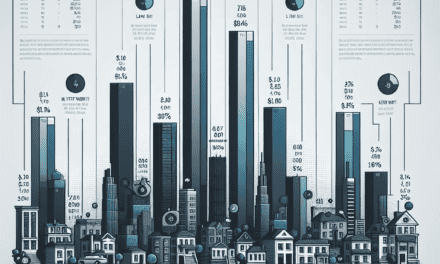“Tesla Earnings: Accelerating Ahead, Leaving Big Tech in the Rearview”
Introduction
Tesla’s latest earnings report underscores a widening disparity between the electric vehicle pioneer and the traditional Big Tech giants. While Tesla continues to demonstrate robust growth in vehicle deliveries and revenue, its financial performance reveals a growing gap in profitability and market dynamics compared to established technology behemoths like Apple, Amazon, and Microsoft. The report highlights Tesla’s ongoing challenges in scaling production efficiently and managing costs, even as it expands its global footprint and invests heavily in innovation. This divergence in earnings performance raises questions about Tesla’s long-term positioning in the tech-driven market landscape and its ability to sustain its competitive edge amidst intensifying competition and economic pressures.
Tesla’s Revenue Growth Compared to Big Tech Giants
Tesla’s recent earnings report has once again brought to light the growing disparity between its revenue growth and that of the established big tech giants. As the electric vehicle manufacturer continues to expand its market presence, it is essential to examine how its financial performance stacks up against industry titans such as Apple, Amazon, Google, and Microsoft. This comparison not only highlights Tesla’s unique position in the tech landscape but also underscores the challenges and opportunities it faces as it seeks to solidify its standing among these giants.
To begin with, Tesla’s revenue growth has been nothing short of impressive. The company has consistently reported year-over-year increases, driven by robust demand for its electric vehicles and the expansion of its energy and storage solutions. In its latest earnings report, Tesla announced a significant rise in revenue, reflecting its ability to scale production and deliver vehicles at an unprecedented pace. This growth trajectory is particularly noteworthy when juxtaposed with the more mature revenue streams of big tech companies, which, while substantial, have shown signs of plateauing in certain segments.
However, it is crucial to recognize that the nature of Tesla’s business model differs fundamentally from that of traditional tech giants. While companies like Apple and Google derive a significant portion of their revenue from software and services, Tesla’s primary revenue source remains its hardware—specifically, its electric vehicles. This distinction is important because it highlights the different growth dynamics at play. Whereas big tech companies can leverage software scalability to achieve rapid revenue increases with relatively low incremental costs, Tesla’s growth is more capital-intensive, requiring substantial investment in manufacturing infrastructure and supply chain management.
Moreover, Tesla’s focus on innovation and technological advancement has positioned it as a leader in the electric vehicle market, a sector that is rapidly gaining traction as the world shifts towards sustainable energy solutions. This focus on innovation is a common thread that ties Tesla to the big tech giants, all of which have built their empires on groundbreaking technologies. However, Tesla’s path to growth is fraught with unique challenges, including supply chain disruptions, regulatory hurdles, and the need to continuously innovate in a highly competitive market.
In contrast, big tech companies have diversified their revenue streams, allowing them to weather market fluctuations more effectively. For instance, Amazon’s dominance in e-commerce is complemented by its thriving cloud computing division, Amazon Web Services, which has become a significant revenue driver. Similarly, Microsoft’s transition to cloud-based services has bolstered its financial performance, while Google’s advertising business continues to be a major revenue contributor. This diversification provides a buffer against sector-specific downturns, a luxury that Tesla, with its concentrated focus on electric vehicles, does not yet fully possess.
Nevertheless, Tesla’s strategic initiatives, such as the development of autonomous driving technology and the expansion of its energy products, indicate its intent to broaden its revenue base. These efforts, if successful, could mitigate some of the risks associated with its current business model and align its growth trajectory more closely with that of the diversified tech giants.
In conclusion, while Tesla’s revenue growth is impressive and indicative of its potential to disrupt the automotive industry, the company faces distinct challenges that set it apart from the big tech giants. As Tesla continues to innovate and expand its market presence, its ability to navigate these challenges will be crucial in determining whether it can bridge the growing gap with its more established counterparts.
Profit Margins: Tesla Versus Leading Tech Companies
Tesla’s recent earnings report has once again brought to light the growing disparity between its profit margins and those of leading tech giants such as Apple, Microsoft, and Alphabet. While Tesla has made significant strides in the automotive industry, its financial performance, particularly in terms of profit margins, continues to lag behind these established technology behemoths. This divergence underscores the distinct challenges and opportunities faced by Tesla as it navigates its unique position at the intersection of technology and manufacturing.
To begin with, Tesla’s profit margins are inherently influenced by the capital-intensive nature of the automotive industry. Unlike software-driven companies like Microsoft and Alphabet, which benefit from high-margin digital products and services, Tesla must contend with the substantial costs associated with manufacturing, supply chain logistics, and raw materials. These factors inherently compress Tesla’s margins, making it difficult to achieve the same level of profitability as its tech counterparts. Despite this, Tesla has made commendable progress in optimizing its production processes and reducing costs, which has led to gradual improvements in its margins over time.
In contrast, companies like Apple have consistently reported robust profit margins, largely due to their ability to leverage economies of scale and their focus on high-margin products such as the iPhone. Apple’s business model, which combines premium pricing with a loyal customer base, allows it to maintain enviable margins that are difficult for Tesla to replicate. Furthermore, Apple’s extensive ecosystem of services, including the App Store and Apple Music, provides additional revenue streams that bolster its overall profitability.
Similarly, Microsoft’s transition to a cloud-first strategy has significantly enhanced its profit margins. The company’s Azure cloud platform, along with its suite of subscription-based services like Office 365, has enabled Microsoft to generate recurring revenue with relatively low incremental costs. This shift towards cloud computing has not only driven growth but also improved Microsoft’s margins, setting a benchmark that Tesla, with its focus on physical products, finds challenging to match.
Alphabet, the parent company of Google, also benefits from its dominance in digital advertising, which remains a high-margin business. The company’s ability to monetize its vast user base through targeted advertising ensures a steady stream of revenue with minimal direct costs. Additionally, Alphabet’s investments in other high-margin areas such as cloud computing and artificial intelligence further enhance its profitability, creating a stark contrast with Tesla’s margin profile.
Nevertheless, it is important to recognize that Tesla’s business model is fundamentally different from these tech giants. While Tesla may not yet match their profit margins, its focus on innovation and sustainability positions it uniquely within the market. The company’s investments in battery technology, autonomous driving, and energy solutions have the potential to unlock new revenue streams and improve margins in the long term. Moreover, Tesla’s brand strength and its ability to capture consumer interest in electric vehicles provide a solid foundation for future growth.
In conclusion, the growing gap between Tesla’s profit margins and those of leading tech companies highlights the distinct challenges faced by the electric vehicle manufacturer. While Tesla continues to make strides in improving its financial performance, the inherent differences in business models and industry dynamics mean that achieving parity with tech giants remains a formidable task. However, Tesla’s commitment to innovation and its strategic focus on sustainable solutions offer promising avenues for enhancing profitability in the years to come.
Market Valuation: Tesla’s Position Among Tech Titans
Tesla’s recent earnings report has once again brought to light the growing gap between the electric vehicle manufacturer and the traditional tech giants. As the company continues to solidify its position in the automotive industry, its market valuation has become a focal point of discussion among investors and analysts alike. While Tesla’s innovative approach and rapid growth have propelled it into the ranks of the world’s most valuable companies, its position among tech titans such as Apple, Microsoft, and Amazon remains a subject of debate.
To begin with, Tesla’s market valuation has seen a meteoric rise over the past few years, driven by its pioneering advancements in electric vehicles and renewable energy solutions. This surge in valuation has placed Tesla in a unique position, often being compared to established tech giants. However, the nature of Tesla’s business model and its core focus on manufacturing and energy solutions set it apart from companies that primarily operate in the digital and software domains. Despite this distinction, Tesla’s innovative edge and its embrace of cutting-edge technology have allowed it to be perceived as a tech company in its own right.
Moreover, the comparison between Tesla and big tech firms is further complicated by the differing revenue streams and business strategies. While companies like Apple and Microsoft generate substantial revenue from software, services, and digital products, Tesla’s revenue is predominantly derived from vehicle sales and energy products. This fundamental difference in revenue composition highlights the challenges in directly comparing Tesla’s market valuation with that of traditional tech giants. Nevertheless, Tesla’s foray into areas such as autonomous driving technology and artificial intelligence underscores its ambition to expand its technological footprint, thereby narrowing the gap with its tech counterparts.
In addition to revenue streams, the market dynamics and investor sentiment surrounding Tesla and big tech companies also play a crucial role in shaping their respective valuations. Tesla’s valuation is often influenced by its growth potential and the broader adoption of electric vehicles, which are seen as pivotal in the transition to sustainable energy. On the other hand, big tech companies benefit from their established market positions, diversified product offerings, and consistent revenue streams, which provide a level of stability that Tesla is still striving to achieve. This divergence in market dynamics contributes to the varying perceptions of risk and reward associated with investing in Tesla versus traditional tech giants.
Furthermore, the regulatory landscape presents another layer of complexity in evaluating Tesla’s position among tech titans. As governments worldwide push for stricter emissions standards and increased adoption of clean energy, Tesla stands to benefit from favorable regulatory tailwinds. Conversely, big tech companies face increasing scrutiny over data privacy, antitrust concerns, and their influence on global markets. These regulatory challenges can impact investor confidence and, consequently, market valuations.
In conclusion, while Tesla’s market valuation highlights its impressive growth and innovative prowess, its position among big tech giants is nuanced by differences in business models, revenue streams, market dynamics, and regulatory environments. As Tesla continues to evolve and expand its technological capabilities, the gap with traditional tech titans may continue to narrow. However, the unique challenges and opportunities faced by Tesla and big tech companies underscore the complexity of direct comparisons. Ultimately, Tesla’s journey in the market valuation landscape is a testament to its transformative impact on the automotive and energy sectors, as well as its potential to redefine the boundaries of what constitutes a tech titan.
Innovation and R&D Spending: Tesla’s Strategy Against Big Tech

Tesla’s recent earnings report has underscored a growing disparity between the electric vehicle manufacturer and the tech giants that dominate Silicon Valley. While Tesla has made significant strides in the automotive industry, its approach to innovation and research and development (R&D) spending reveals a strategic divergence from the likes of Apple, Google, and Amazon. This difference is not merely a matter of scale but also of focus and execution, which could have long-term implications for Tesla’s competitive positioning.
To begin with, Tesla’s R&D spending, though substantial, pales in comparison to the colossal budgets of the big tech companies. In the latest fiscal year, Tesla allocated approximately $2.5 billion to R&D, a figure that, while impressive, is dwarfed by the tens of billions spent by its tech counterparts. For instance, Alphabet, Google’s parent company, invested over $30 billion in R&D, while Amazon’s expenditure exceeded $40 billion. This disparity highlights a fundamental difference in how these companies prioritize and execute their innovation strategies.
Despite the smaller budget, Tesla’s R&D efforts are highly focused and targeted, primarily directed towards advancing electric vehicle technology, battery innovation, and autonomous driving capabilities. This concentrated approach allows Tesla to maintain a competitive edge in its core market, even as it faces increasing competition from both traditional automakers and new entrants in the electric vehicle space. Moreover, Tesla’s ability to innovate with relatively limited resources speaks to its efficiency and the strategic vision of its leadership.
In contrast, the big tech giants have adopted a more diversified approach to R&D, investing heavily across a wide array of technologies and industries. This includes everything from artificial intelligence and cloud computing to hardware development and digital services. Such diversification not only spreads risk but also positions these companies to capitalize on emerging trends across multiple sectors. However, this broad focus can sometimes dilute efforts in any single area, potentially slowing the pace of innovation in specific domains.
Furthermore, Tesla’s strategy is deeply intertwined with its mission to accelerate the world’s transition to sustainable energy. This singular focus on sustainability and clean energy solutions differentiates Tesla from tech giants whose R&D investments are often driven by a pursuit of market dominance and revenue growth across various sectors. Tesla’s commitment to its mission is evident in its continuous efforts to improve battery technology, expand its Supercharger network, and develop energy storage solutions, all of which contribute to a more sustainable future.
Nevertheless, the question remains whether Tesla’s focused R&D strategy will be sufficient to maintain its competitive edge in the long term. As the automotive industry undergoes a profound transformation, driven by technological advancements and shifting consumer preferences, Tesla will need to balance its concentrated efforts with the need to explore new opportunities and adapt to changing market dynamics. This challenge is compounded by the rapid pace of innovation in the tech sector, where companies are constantly pushing the boundaries of what is possible.
In conclusion, Tesla’s earnings report highlights a growing gap between the company and the big tech giants in terms of R&D spending and innovation strategy. While Tesla’s focused approach has served it well thus far, enabling it to lead the charge in electric vehicles and sustainable energy, the evolving landscape of technology and transportation presents both challenges and opportunities. As Tesla navigates this complex environment, its ability to innovate efficiently and effectively will be crucial in determining its future success and its role in shaping the industries of tomorrow.
Tesla’s Global Expansion and Its Impact on Earnings
Tesla’s recent earnings report has underscored a growing gap between the electric vehicle manufacturer and the traditional big tech giants. As Tesla continues its global expansion, the company’s financial performance reflects both the opportunities and challenges inherent in its ambitious growth strategy. This expansion is not only reshaping Tesla’s market presence but also influencing its earnings in significant ways.
To begin with, Tesla’s global expansion strategy has been a key driver of its recent financial performance. The company has been aggressively increasing its production capacity by establishing Gigafactories in strategic locations around the world. These factories, located in regions such as Shanghai, Berlin, and Texas, are designed to meet the growing demand for electric vehicles and to reduce production costs through economies of scale. As a result, Tesla has been able to increase its vehicle deliveries, which has positively impacted its revenue streams.
Moreover, Tesla’s expansion into international markets has allowed the company to tap into new customer bases, further boosting its earnings. In particular, the Chinese market has emerged as a crucial component of Tesla’s growth strategy. With the Shanghai Gigafactory operating at full capacity, Tesla has been able to cater to the increasing demand for electric vehicles in China, which is the world’s largest automotive market. This strategic move has not only enhanced Tesla’s revenue but also strengthened its competitive position against local and international rivals.
However, Tesla’s global expansion is not without its challenges. The company faces significant competition from both established automakers and new entrants in the electric vehicle market. As these competitors ramp up their own production capabilities and introduce new models, Tesla must continuously innovate to maintain its market leadership. Additionally, geopolitical tensions and trade policies can pose risks to Tesla’s supply chain and operations, potentially impacting its earnings.
Furthermore, Tesla’s expansion efforts require substantial capital investment, which can strain the company’s financial resources. Building and operating Gigafactories involves significant upfront costs, and while these investments are expected to yield long-term benefits, they can pressure Tesla’s short-term profitability. The company must carefully balance its growth ambitions with prudent financial management to ensure sustainable earnings growth.
In contrast to traditional big tech giants, which often rely on software and services for revenue, Tesla’s business model is heavily dependent on manufacturing and selling physical products. This fundamental difference highlights the growing gap between Tesla and its tech counterparts. While companies like Apple, Amazon, and Google generate substantial profits from digital services and platforms, Tesla’s earnings are more closely tied to the production and sale of vehicles. This distinction underscores the unique challenges and opportunities that Tesla faces as it continues to expand globally.
In conclusion, Tesla’s global expansion is a double-edged sword that significantly impacts its earnings. While the company’s strategic investments in international markets and production facilities have driven revenue growth, they also present challenges that must be carefully managed. As Tesla navigates this complex landscape, its ability to innovate, compete, and adapt will be crucial in closing the gap with big tech giants and achieving sustained financial success. The coming years will be pivotal for Tesla as it seeks to solidify its position as a leader in the rapidly evolving automotive industry.
Stock Performance: Tesla in the Big Tech Arena
Tesla’s recent earnings report has underscored a widening gap between the electric vehicle manufacturer and its counterparts in the Big Tech arena. As the company continues to navigate the complexities of the automotive industry, its stock performance has become a focal point for investors seeking to understand its position relative to other technology giants. While Tesla has long been grouped with companies like Apple, Amazon, and Alphabet due to its innovative approach and market capitalization, its recent financial disclosures reveal a distinct trajectory that sets it apart from these tech behemoths.
To begin with, Tesla’s revenue growth, while impressive, has not matched the explosive expansion seen in some of its Big Tech peers. The company’s focus on scaling production and expanding its global footprint has resulted in significant capital expenditures, which, in turn, have impacted its profit margins. In contrast, companies like Apple and Microsoft have leveraged their established product lines and services to generate substantial profits with relatively lower capital investment. This difference in business models highlights the unique challenges Tesla faces as it strives to balance growth with profitability.
Moreover, Tesla’s stock performance has been subject to greater volatility compared to its Big Tech counterparts. The automotive industry’s inherent cyclicality, coupled with external factors such as supply chain disruptions and fluctuating raw material costs, has contributed to this instability. While Big Tech companies have also faced their share of market fluctuations, their diversified revenue streams and robust cash reserves have provided a buffer against such volatility. Consequently, Tesla’s stock has experienced more pronounced swings, reflecting investor sentiment that is closely tied to its operational performance and broader economic conditions.
In addition to these financial considerations, Tesla’s position in the Big Tech arena is further complicated by its regulatory environment. The automotive industry is subject to stringent regulations, particularly concerning emissions and safety standards. As Tesla continues to innovate with its autonomous driving technology and energy solutions, it must navigate a complex web of regulatory requirements that can impact its operational flexibility and cost structure. In contrast, Big Tech companies, while not immune to regulatory scrutiny, often face different challenges related to data privacy and antitrust issues. This divergence in regulatory landscapes adds another layer of complexity to Tesla’s competitive positioning.
Despite these challenges, Tesla’s commitment to innovation remains a key differentiator. The company’s advancements in battery technology, energy storage solutions, and autonomous driving capabilities continue to capture the imagination of investors and consumers alike. This focus on cutting-edge technology aligns with the broader ethos of Big Tech, yet Tesla’s execution in a capital-intensive industry sets it apart. As the company continues to push the boundaries of what is possible in electric mobility, it maintains a unique position that straddles both the automotive and technology sectors.
In conclusion, Tesla’s recent earnings report highlights the growing gap between the company and its Big Tech counterparts. While it shares certain characteristics with these technology giants, such as a commitment to innovation and a significant market presence, its distinct business model and industry-specific challenges underscore the differences in their respective trajectories. As Tesla continues to evolve, its stock performance will likely remain a barometer for investors seeking to understand its place within the broader technology landscape. The company’s ability to navigate these complexities will be crucial in determining its long-term success and its standing among the giants of the tech world.
Challenges and Opportunities for Tesla in the Tech Industry
Tesla’s recent earnings report has underscored a growing disparity between the electric vehicle manufacturer and the tech giants that have long dominated the industry. While Tesla has made significant strides in the automotive sector, its position within the broader tech landscape presents both challenges and opportunities. As the company continues to innovate, it must navigate a complex environment where it is both a disruptor and a competitor to established technology firms.
To begin with, Tesla’s financial performance has been impressive, with the company consistently posting profits and expanding its market share. However, when compared to tech behemoths like Apple, Amazon, and Google, Tesla’s revenue and profit margins reveal a gap that highlights the unique challenges it faces. Unlike these tech giants, which benefit from diversified product lines and services, Tesla remains heavily reliant on its core automotive business. This reliance makes the company more vulnerable to fluctuations in the automotive market, such as changes in consumer demand or supply chain disruptions.
Moreover, Tesla’s ambitious growth plans require substantial capital investment, which can strain its financial resources. The company is investing heavily in new manufacturing facilities, battery technology, and autonomous driving capabilities. While these investments are crucial for maintaining its competitive edge, they also pose a risk if the anticipated returns do not materialize. In contrast, tech giants often have more flexibility to allocate resources across various projects, allowing them to absorb potential setbacks more easily.
Despite these challenges, Tesla’s position in the tech industry is not without its advantages. The company’s focus on innovation has allowed it to carve out a niche that blends automotive and technology sectors. Tesla’s advancements in battery technology and energy storage have positioned it as a leader in sustainable energy solutions, a field that is becoming increasingly important as global efforts to combat climate change intensify. This focus on sustainability not only differentiates Tesla from traditional automakers but also aligns it with the values of environmentally conscious consumers and investors.
Furthermore, Tesla’s foray into autonomous driving technology represents a significant opportunity for growth. The development of self-driving cars has the potential to revolutionize transportation, and Tesla is at the forefront of this movement. By leveraging its expertise in artificial intelligence and machine learning, Tesla aims to create a fully autonomous vehicle that could redefine personal mobility. Success in this area could open up new revenue streams and solidify Tesla’s status as a tech innovator.
In addition to technological advancements, Tesla’s brand strength and customer loyalty are assets that can help it compete with tech giants. The company’s charismatic CEO, Elon Musk, has cultivated a devoted following, and Tesla’s products are often seen as status symbols. This brand appeal can drive sales and foster a community of enthusiasts who are willing to advocate for the company.
In conclusion, while Tesla faces significant challenges in bridging the gap with big tech giants, it also has unique opportunities to leverage its strengths in innovation and sustainability. By continuing to invest in cutting-edge technology and maintaining its brand appeal, Tesla can position itself as a formidable player in the tech industry. As the company navigates this complex landscape, its ability to adapt and evolve will be crucial in determining its long-term success.
Q&A
1. **Q: How did Tesla’s recent earnings compare to expectations?**
A: Tesla’s recent earnings fell short of Wall Street expectations, highlighting challenges in maintaining growth and profitability.
2. **Q: What factors contributed to Tesla’s earnings shortfall?**
A: Increased competition, production challenges, and price cuts to boost demand contributed to the earnings shortfall.
3. **Q: How is Tesla’s growth trajectory different from Big Tech giants?**
A: Unlike Big Tech giants, Tesla faces more volatility due to its reliance on manufacturing and the automotive market, which are subject to supply chain issues and economic fluctuations.
4. **Q: What impact did price cuts have on Tesla’s financial performance?**
A: Price cuts, while aimed at increasing sales volume, squeezed profit margins and affected overall profitability.
5. **Q: How are Big Tech companies performing in comparison to Tesla?**
A: Big Tech companies are generally showing robust growth and profitability, driven by strong demand for digital services and products.
6. **Q: What strategic moves is Tesla considering to address its challenges?**
A: Tesla is exploring cost-cutting measures, expanding into new markets, and accelerating the development of new models to address its challenges.
7. **Q: What is the market’s reaction to Tesla’s earnings report?**
A: The market reacted negatively, with Tesla’s stock experiencing a decline as investors expressed concerns over its growth prospects and competitive pressures.
Conclusion
Tesla’s recent earnings report underscores a widening disparity between its financial performance and that of major tech giants. While Tesla continues to demonstrate robust revenue growth and vehicle delivery numbers, its profit margins and market valuation are increasingly overshadowed by the expansive and diversified revenue streams of companies like Apple, Amazon, and Microsoft. These tech behemoths benefit from a broader array of high-margin services and products, which buffer them against market volatility and economic fluctuations. In contrast, Tesla remains heavily reliant on the automotive sector, which is subject to supply chain challenges and competitive pressures. This growing gap highlights the need for Tesla to diversify its business model and explore new revenue avenues to maintain its competitive edge and investor confidence in the long term.





